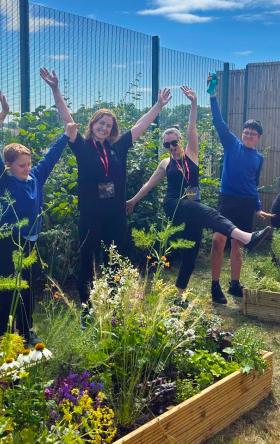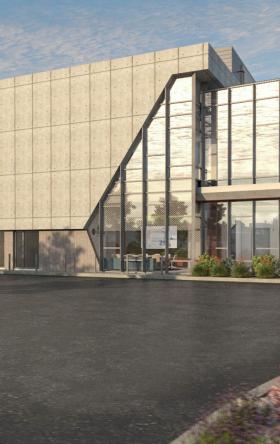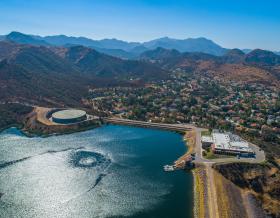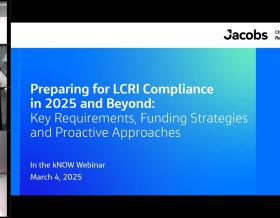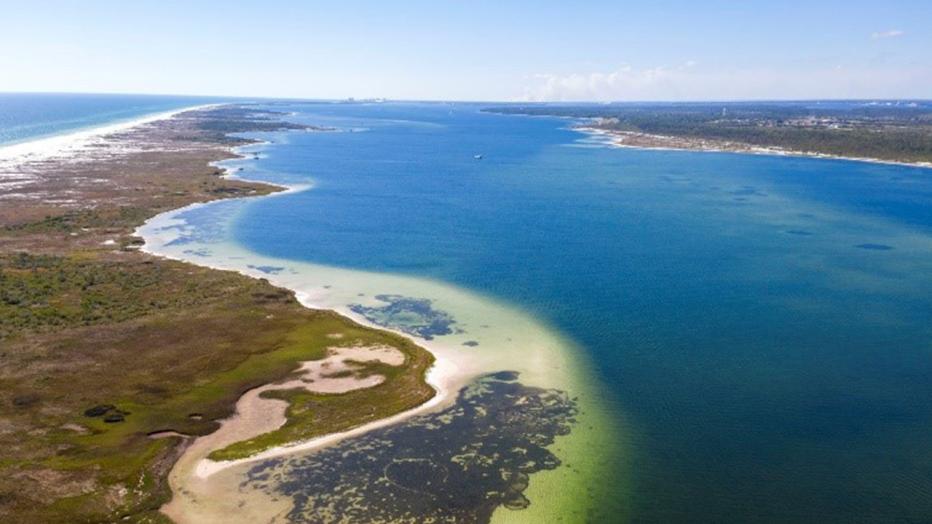
Tyndall Air Force Base (AFB) is situated 12 miles from Panama City, Florida. This bustling hub of military activity is a significant base camp and the location of many of the U.S. Air Force’s operational readiness military resources. The base, as well as the surrounding region, is home to service members, their families and the civilians that work at the base. In October of 2018, Tyndall AFB suffered a devastating direct hit by Category Five Hurricane Michael. The eye of the storm passed directly over the base causing damage to 100% of its assets, including vital buildings and equipment. While Jacobs initially joined the program to help with emergency response and design the base rebuild, the project has grown into so much more.
Dr. John Mogge, Director of Federal Solutions & Technology, is Jacobs’ program manager for Tyndall. He’s led the base’s master planning and program development efforts and the team’s overall response to multiple contracts in support of the base’s recovery from Hurricane Michael. “Appropriated funding for military construction is provided on a project-by-project basis but to reach a higher level of mission assurance, we had to think outside of the box,” said Dr. Mogge. “While our initial project scope didn’t include coastal resilience, it didn’t stop the team from proposing a solution based on engineering-with-nature that would help protect the structures on the base from future natural disasters.”
Located on the coast, Tyndall AFB is vulnerable to high winds, extensive rainfall and storm surges from the Gulf of Mexico. These surges can generate high water levels capable of inundating low-lying parts of the base on both East Bay and the Gulf side. These risks are expected to increase over time as sea levels rise, leading to the significant danger of stronger and more frequent hurricanes over time. “Tyndall AFB covers approximately 47 square miles, with 128 miles of coastline, making protecting the base a unique and challenging task” said Lieutenant Colonel Brandy Smart, Commander of the 325th Civil Engineer Squadron. “By exploring a diverse menu of nature-based solutions we are in a better position to sustain, restore, and modernize natural infrastructure, ensuring the capability of Air Force lands to support the mission of the installation.” The Jacobs team proposed a Coastal Resiliency Program that would quantify these risks with an understanding of the present and future environmental impacts to the base. This program piloted four projects, using oyster reefs, rebuilding sand-dunes, and enhancing marsh and seagrass as defense mechanisms to protect the base.
“Our coastal areas are nature’s first line of defense from any natural disaster,” Dr. Mogge said. “We want to take advantage of every possible mitigation measure available to us to help the base recover in days and weeks, versus months and year.” As a result of the use of engineering-with-nature solutions, the program recently received the International Excellence Award from England’s Environment Agency Flood & Coast Excellence Awards. For Jacobs’ Tyndall team, this award shows how knowing the client, understanding their needs, and challenging the status quo, creates an opportunity to go far beyond the project’s initial scope.
One of the obstacles of the Coastal Resiliency Program was funding. To create this program, the team had to focus on finding alternative funding that was both innovative and sustainable. The first step was to commission a coastal resilience work group comprised of nationally prominent Non-Governmental Organizations (NGOs), state and community stakeholders. The goal of this working group was to explore pathways of collaboration, secure approvals, permits and grants to implement the program projects, and solicit feedback on our nature-based solutions pilot projects.
“This whole program started based on the needs of the client - even with rebuilding the base, there was a large vulnerability past the water’s edge,” said Dr. Mogge. “With Tyndall strategically located on the coast, our job is to continually help our client address as many of the possible threats, man-made or nature-based that threaten their mission.”The initial grant for the Coastal Resiliency Program was through the Department of Defense Readiness and Environmental Protection Integration Program (REPI). By engaging in non-government funding opportunities, the team has received more than $14 million in program grants and built lasting stakeholder partnerships.
“This proves that alternative funding is possible,” added Dr. Mogge. “When we go to clients and they say that higher levels of resiliency and sustainability would be nice but it’s very difficult to get money for that, we can point to this project and program.” As the team begins phase two of the Coastal Resiliency Program, they will continue to use these techniques to foster relationships, reach mission assurance and build resilient solutions that allows the region and base to weather any storm.
For more information on coastal resilience at Tyndall AFB, including a podcast on engineering with nature and maps of the proposed pilot projects, visit http://tyndallcoastalresilience.com/.
